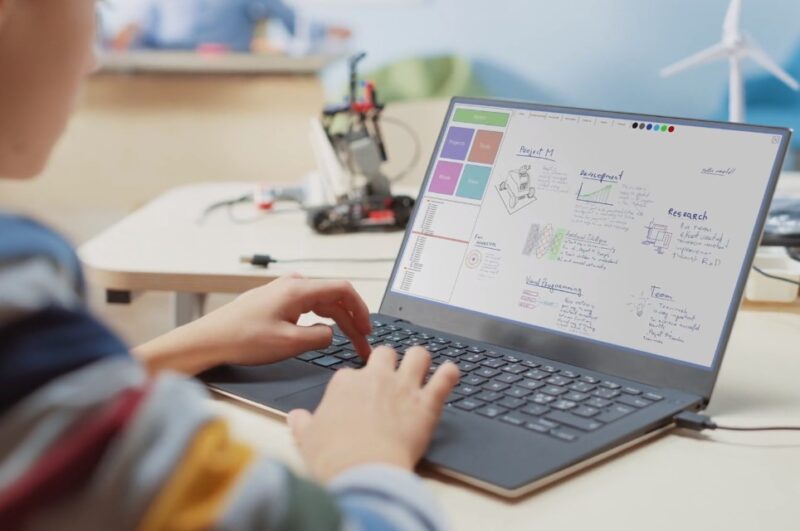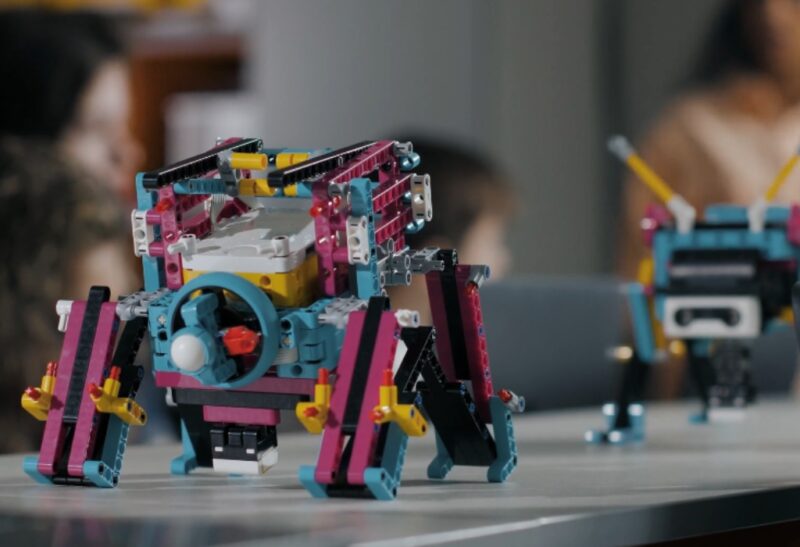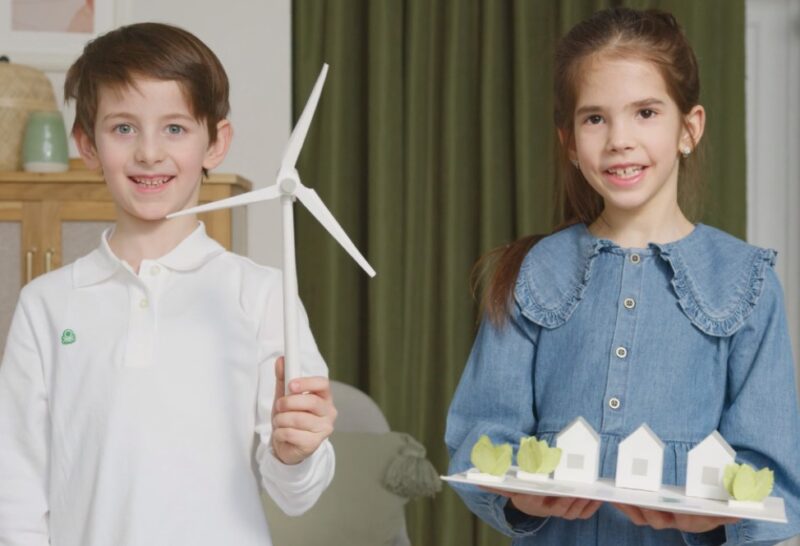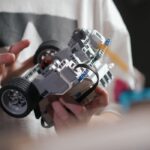Exciting Engineering Activities for Kids: Engage Young Minds Engineering isn’t just for adults—kids can and should get in on the action too. Engineering is a multidimensional field that brings together math, science, creativity, and problem-solving. It’s also a lot of fun. In an ever-increasingly digital world, it’s vital for children to understand these concepts, not only to equip them for future careers, but also to develop their cognitive abilities, creativity, and critical thinking skills.
By engaging young minds in engineering activities, we are fostering a generation that will be better prepared to face global challenges and transform the world for the better. Doing so doesn’t require any specialized equipment or training, but rather an inquisitive mind, curiosity, and a willingness to get hands-on with learning.
From building bridges out of spaghetti to designing their own LEGO masterpieces, kids can explore the world of engineering with some everyday household materials. In this blog post, we will look at a range of activities that can stimulate young minds and ignite their passion for engineering.
Building Bridges
Building a bridge is an excellent way for kids to dive into the world of civil engineering. Not only does it teach kids about the fundamental principles of structures and forces, but it also allows them to tap into their creativity and critical thinking skills. Materials like straws, toothpicks, and marshmallows can be transformed into surprisingly sturdy bridges. This activity involves a simple challenge: who can build the longest, most durable bridge using only these materials?
Start by encouraging kids to sketch out their bridge designs on paper, considering how they can distribute weight and ensure stability. The activity ends with a “bridge test” placing weights on the bridge until it collapses. This process is great for teaching kids about resilience and the iterative process of design.
Design Challenge
Beyond bridges, there are countless other structures that kids can design and build. Treehouses, skyscrapers, tunnels, or even fictional constructs like Hogwarts or the Death Star—the possibilities are endless. The goal of these design challenges is to introduce children to the planning and execution process, foster problem-solving skills, and develop spatial reasoning. Depending on the age of the kids and the complexity of the structure, you can incorporate a variety of materials LEGO blocks, cardboard, paper, and even digital tools like Minecraft or Tinkercad.
Robotics and Coding

In this digital age, understanding coding is just as crucial as reading and writing. Robotics provides an engaging and hands-on way to introduce kids to coding. Whether it’s assembling a robot from a kit or programming a bot to navigate a maze, these activities help kids develop a solid understanding of programming concepts, logic, and problem-solving skills. One popular tool is the LEGO Mindstorms series, which combines traditional LEGO building with computer programming.
Kids can construct their own robots and then use a computer to program their movements. If a physical kit is not accessible, there are also online platforms such as Scratch or Code.org, where kids can experiment with drag-and-drop coding.
Science Experiments

Science experiments are an exciting way to bring engineering concepts to life. Activities like creating a homemade lava lamp or building a simple water filter can illustrate principles like buoyancy and filtration. Homemade lava lamps involve oil, water, food coloring, and effervescent tablets to create a colorful display of rising and falling bubbles an excellent demonstration of density and buoyancy.
On the other hand, building a water filter out of a plastic bottle, gravel, sand, and activated charcoal can teach kids about filtration and environmental engineering. By seeing these principles in action, kids can better grasp the real-world implications of engineering.
Paper Airplane Challenge
Paper airplanes offer a playful and accessible introduction to the principles of aerodynamics and design. Challenge kids to create the best-performing paper airplane, which could mean the one that flies the farthest, stays in the air the longest or can carry a small weight. Start by teaching kids the basicshow the shape, size, and weight of the airplane can affect its performance. Then, allow them to experiment with different designs and see how these changes impact the flight.
Through this process, kids can learn about design optimization, testing, and iteration, all crucial elements in engineering.
DIY Marble Run
Creating a marble run is another fun and educational activity. This project allows kids to explore concepts of gravity, motion, and energy. The aim is to build a course for a marble using everyday materials like cardboard tubes, paper plates, and duct tape. Start by explaining the basic concepts and then let the kids design their maze. Encourage them to incorporate loops, jumps, and twists. The end result is not only a working marble run but also a practical lesson in physics and engineering design.
Electrical Circuit Exploration
Electricity is a fundamental concept in engineering, and there are many simple and safe ways to introduce kids to this topic. Basic circuit kits that include batteries, wires, bulbs, and switches can be used to create a light-up circuit or a simple electric motor. Kids can experiment with creating series and parallel circuits, understanding how electricity flows, and observing the effects of resistance. These hands-on activities provide a great introduction to electrical engineering, laying the foundation for more complex topics.
LEGO Engineering

LEGO is more than just a toy—it’s a versatile tool that can be used to teach kids about engineering concepts. From building simple machines like levers and pulleys to constructing intricate mechanical systems, LEGO encourages creativity, problem-solving, and understanding of mechanical principles.
There are numerous resources and challenge cards available online, which present kids with a problem that they need to solve using their LEGO pieces. These challenges can range from constructing a car that moves to building a sturdy tower. Through these activities, kids can gain a hands-on understanding of engineering principles, all while having fun.
Engineering Challenges
Challenge kids by presenting them with real-world engineering problems. These can range from figuring out how to clean up an oil spill (a lesson in environmental engineering) to designing a more ergonomic school bag (a taste of industrial design). These activities not only test their problem-solving skills but also teach them about the role of engineering in society. It’s a fantastic way for kids to see how engineering impacts our lives and how they can use their skills to create positive change.
Environmental Engineering

In an era of climate change, teaching kids about sustainability and conservation is more important than ever. Activities like designing a wind turbine, creating a solar oven, or constructing a model of a sustainable city can provide an introduction to environmental engineering.
These projects allow kids to see the role of engineering in addressing environmental issues and can spark discussions about renewable energy, recycling, and sustainability. By incorporating these lessons into their play, we can inspire a new generation of environmentally conscious engineers.
Engineering Games and Apps
In the digital world, there are numerous games and apps that can help kids learn about engineering. From physics-based games like Angry Birds and Minecraft to coding apps like Tynker and Hopscotch, these tools offer engaging and interactive ways to explore engineering concepts. While these should not replace hands-on activities, they can be a great supplement, allowing kids to explore and experiment with these concepts in a digital environment.
FAQs
How do real-life engineering challenges benefit kids?
Real-life engineering challenges help kids understand the relevance and application of engineering in everyday life. It helps them recognize the role engineers play in society and how they contribute to solving real-world problems.
How can kids learn about environmental engineering?
Environmental engineering can be introduced through activities related to sustainability and conservation. For example, designing a wind turbine or solar oven can teach about renewable energy. Creating a model of a sustainable city can also foster discussions about recycling, water conservation, and green energy.
What are some engineering games and apps for kids?
There are numerous engineering-related games and apps available. Physics-based games like Angry Birds or Bridge Constructor provide a fun way to learn about forces and structures. Minecraft fosters creativity and spatial reasoning. Coding apps like Tynker or Hopscotch introduce programming concepts in an engaging way.
Are these activities suitable for kids of all ages?
Yes, but some activities may require more guidance or adaptation depending on the child’s age and abilities. Always ensure that activities are age-appropriate and provide assistance when necessary.
How can these activities be integrated into the school curriculum?
Many of these activities align with STEM (Science, Technology, Engineering, and Math) learning objectives and can be integrated into science, math, and technology lessons. Teachers can use these activities to supplement classroom instruction and provide a hands-on understanding of the concepts being taught.
Do parents need to have an engineering background to guide their kids through these activities?
No, these activities are designed to be accessible and enjoyable for everyone, regardless of their background in engineering. The key is to foster an environment of curiosity and creativity, encouraging kids to ask questions, make observations, and learn from their mistakes.
Conclusion
Engaging young minds in engineering activities is an investment in the future. By introducing these concepts at a young age, we can ignite a passion for learning, stimulate curiosity, and develop problem-solving skills. Whether it’s through building a bridge, programming a robot, or designing a sustainable city, these activities are a fun and effective way to engage kids in engineering. So, let’s inspire the engineers of the future—after all, they might just build a better world for us all.







